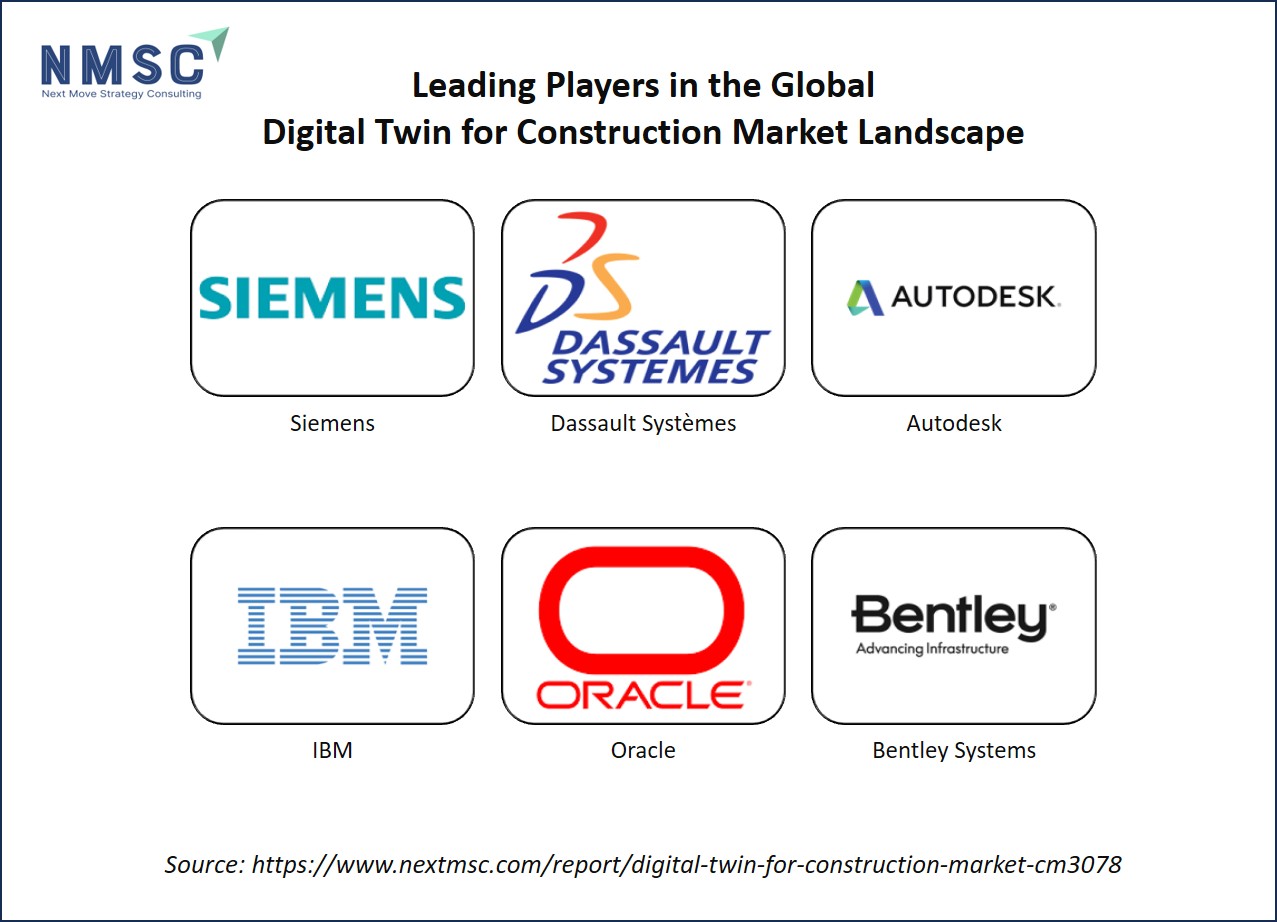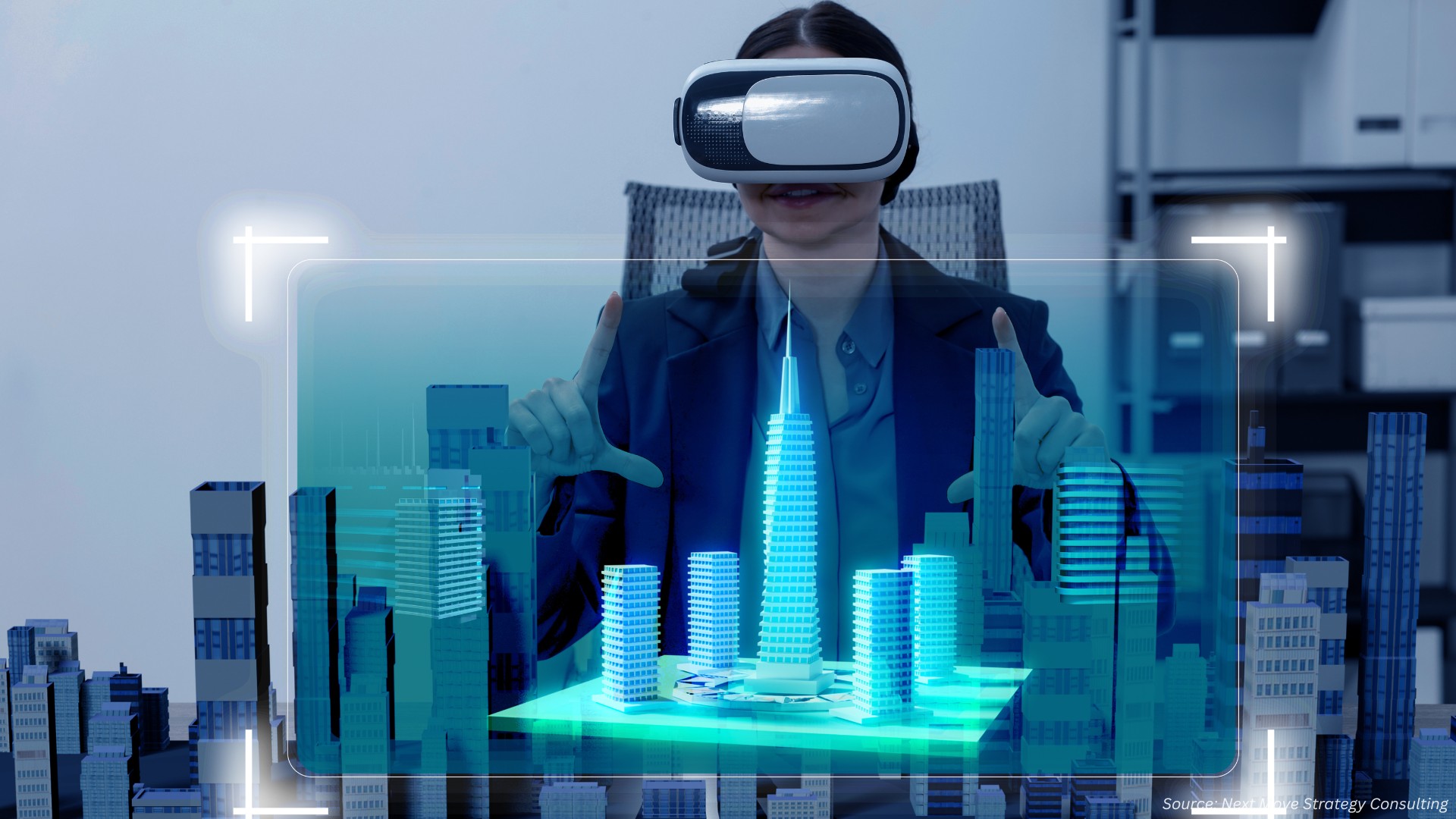Is Digital Twin Technology Revolutionizing the Construction Market in 2025?
Published: 2025-11-11

Imagine stepping into a virtual version of your next construction project—one that mirrors every beam, sensor, and site change in real time. Sounds like science fiction? In 2025, digital twins are making this a reality for the construction industry.
As a market research firm focused on emerging tech, the analysts at NMSC are seeing digital twins evolve from buzzword to backbone, driving efficiency, sustainability, and smarter decision-making. But what exactly are they, and how are they reshaping the market? Let's dive in, drawing on fresh insights from credible research and implementations.
What is a Digital Twin, and Why does it Matter for Construction?
At its core, a digital twin is a virtual replica of a physical asset, process, or system that uses real-time data to simulate, predict, and optimize performance. In construction, this means bridging the gap between blueprints and built reality, from design to demolition.
Think of it as a living blueprint: sensors feed data into a 3D model, allowing teams to spot issues before they arise, like material delays or structural weaknesses. According to a framework developed by Hanyang University ERICA researchers, digital twins integrate Building Information Modeling (BIM), Internet of Things (IoT) sensors, and Geographic Information Systems (GIS) to track modular buildings across their.
This isn't just tech for tech's sake. The construction sector, often plagued by overruns and waste, stands to gain immensely. Global adoption is accelerating, with projections tied to broader digital transformation trends. Yet, as we'll explore, innovations in related fields like telecom and urban planning are spilling over, supercharging construction applications.
Key Takeaways:
-
Digital twins create virtual mirrors of physical builds for real-time insights.
-
They combine BIM, IoT, and GIS to manage assets holistically.
-
In summary, they reduce risks and costs, positioning construction for a more agile future.
How are 6G Digital Twins Enhancing Construction Connectivity?
Ever wondered if faster wireless networks could make construction sites smarter? Enter 6G digital twin channels (DTCs), the foundational tech for digital twin networks (DTNs) in next-gen wireless systems. Researchers from Beijing University of Posts and Telecommunications and China Mobile have pioneered methods to model electromagnetic wave propagation accurately, tackling high-dimensional data challenges in urban environments.
Their approach includes a Unified Radio Environment Knowledge (REK) method, which quantifies wave interactions like reflection and diffraction using simple 3D coordinates. This cuts complexity: a scatterer determination scheme reduces environmental redundancy by 90% in open scenarios, 87% in impending blockage, and 81% in fully blocked ones, achieving over 90% accuracy. A lightweight convolutional neural network (CNN) then predicts path loss in just 4 ms, with a mere 0.3 error rate.
For construction, this means seamless IoT integration on sprawling sites. Imagine drones and sensors communicating flawlessly amid steel girders and concrete barriers, feeding data into digital twins without lag. Validation on the BUPTCMCC-DataAI-6G dataset—a 646 m × 290 m simulated scene with 7,320 user terminals—shows 29.4% better accuracy over raw location data and five orders of magnitude faster than traditional ray tracing.
Impact on the Digital Twin for Construction Market:
As a market research firm, NMSC sees this 6G innovation as a catalyst for the construction digital twin segment, projected to grow as 6G rollouts accelerate post-2025. It addresses a key pain point: unreliable connectivity in dense builds, potentially boosting market adoption by enabling predictive maintenance and remote oversight. This could add 15-20% value to IoT-driven projects, per our analysis of telecom-construction crossovers, fostering partnerships between carriers like China Mobile and builders.
Conclusive Bullets:
-
REK simplifies wave modeling, slashing redundancy by up to 90%.
-
CNN-based predictions enhance speed and precision for site data flows.
-
Overall, 6G DTCs future-proof construction twins for hyper-connected workflows.
Can Digital Twins Streamline Modular Building Lifecycles?
What if your building could be disassembled and reused like LEGO bricks? Relocatable modular buildings (RMBs) promise just that, but managing their multi-site journeys is tricky. A new digital twin framework from Hanyang University ERICA changes the game, creating a facility management system (DT-FMS) that tracks modules from cradle to relocation.
Published in Automation in Construction in August 2025, the framework layers physical assets (like sensors on modules), digital models (for analytics), and services (for decision tools). It leverages IoT for real-time monitoring and GIS for logistics, applied in a South Korean relocatable modular school case study. Results? Improved module reuse, lower operational costs, and better energy efficiency, all while minimizing waste.
This isn't isolated—it's part of a push toward circular economies in construction, where digital twins enable reconfiguration without starting from scratch. Co-author Dr. Dennis Nguyen notes it maximizes value by optimizing relocations, a boon for sustainable devs.
Market Impact:
From our vantage as market researchers, this DT-FMS directly fuels the Digital Twin for Construction Market by addressing RMB growth, expected to hit modular segments valued at billions by 2030. It enhances lifecycle tracking, reducing downtime by up to 25% in reusable projects based on similar IoT integrations we've tracked. This innovation not only cuts environmental footprints but also attracts ESG-focused investors, expanding market share for twin providers in prefab construction.
The framework proves digital twins can make modular builds circular and efficient.
-
Three-layer design ensures end-to-end visibility.
-
Case study validates cost and energy savings.
-
In essence, it paves the way for waste-free, adaptable construction.
|
Framework Layer |
Key Components |
Construction Benefit |
|
Physical |
IoT sensors, on-site tracking |
Real-time asset monitoring [Source 2] |
|
Digital |
BIM modeling, data analytics |
Predictive simulations for reuse |
|
Service |
User dashboards, decision tools |
Streamlined logistics and control |
Are Smart City Twins Redefining Urban Construction?
How do you build a city that's safer and greener without endless trial-and-error? Dublin's answer: a Bentley Systems and NVIDIA-powered digital twin, unveiled at the 2025 Smart City Expo World Congress. This AI-driven platform aggregates real-time feeds from VivaCity's NVIDIA Jetson sensors to model traffic and behaviors, like cyclist "close passes".
Using Bentley's Cesium for geospatial 3D rendering and NVIDIA Omniverse for simulations, it supports urban planning—from flood resilience to mobility. Dublin City Council's Nicola Graham highlights its collaborative edge, blending industry, academia, and public input. Similar pilots in Ho Chi Minh City and Raleigh underscore a global trend.
For construction pros, this means twins that inform infrastructure builds proactively. NVIDIA's Blueprint for smart city AI even includes workflows for training models on city data, with Bentley simulating scenarios.
Market Impact Insights by Next Move Strategy Consulting (NMSC):
NMSC’s research indicates this urban focus is injecting momentum into the digital twin construction market, particularly for public infrastructure. By 2026, we anticipate a 30% uptick in AI-twin adoptions for city projects, driven by partnerships like Bentley-NVIDIA. It lowers barriers for scalable builds, enhancing ROI through data-driven designs and reducing rework costs in high-density zones.
Dublin's twin exemplifies how geospatial AI turns cities into testable prototypes.
-
Real-time sensor fusion boosts safety analytics.
-
Global rollouts signal widespread infrastructure applicability.
-
Ultimately, it elevates construction from reactive to visionary.
Key Companies in the Sector
Various key players operating in the digital twin for construction industry includes Siemens, Dassault Systèmes, Autodesk, AVEVA, Hexagon AB, Trimble, PTC, Ansys, IBM, Microsoft, Oracle, GE Vernova, Bentley Systems, Schneider Electric, ABB, and others. These companies are adopting strategies such as collaboration and acquisition to remain dominant in the market.
Next Steps: Actionable Takeaways for Construction Leaders
Ready to twin your projects? Here are 3-5 steps to get started:
-
Assess Connectivity Needs: Audit your sites for 6G readiness—pilot REK tools to ensure IoT data flows uninterrupted, cutting prediction errors.
-
Adopt Layered Frameworks: Implement a DT-FMS for modular assets; start with IoT pilots to track reuse and slash waste by targeting 20% efficiency gains.
-
Partner for Urban Scale: Collaborate with geospatial firms like Bentley for city twins—focus on AI blueprints to simulate builds and enhance stakeholder buy-in.
-
Measure ESG Impact: Track circular metrics post-twin deployment; aim for quantifiable reductions in energy use to attract sustainable funding.
-
Train Your Team: Invest in BIM-IoT workshops to demystify twins, ensuring seamless integration from design to ops.
About the Author
 Sneha Chakraborty is a passionate SEO Executive and Content Writer with over 4 years of experience in digital marketing and content strategy. She excels in creating optimized, engaging content that enhances online visibility and audience engagement. Skilled in keyword research, analytics, and SEO tools, Sneha blends creativity with data-driven insights to deliver impactful results. Beyond her professional work, she enjoys reading, sketching, and nature photography, drawing inspiration from creativity and storytelling.
Sneha Chakraborty is a passionate SEO Executive and Content Writer with over 4 years of experience in digital marketing and content strategy. She excels in creating optimized, engaging content that enhances online visibility and audience engagement. Skilled in keyword research, analytics, and SEO tools, Sneha blends creativity with data-driven insights to deliver impactful results. Beyond her professional work, she enjoys reading, sketching, and nature photography, drawing inspiration from creativity and storytelling.
About the Reviewer
 Sanyukta Deb is an accomplished Content Writer and Digital Marketing Strategist with extensive expertise in content strategy, SEO, and audience engagement. She specializes in building strong brand visibility through data-driven campaigns and impactful, value-added researched content. With a passion for creativity and innovation, she blends strategic thinking with design and communication to craft meaningful digital experiences. Over the years, she has contributed cross-functional marketing projects, driving measurable impact and audience engagement.
Sanyukta Deb is an accomplished Content Writer and Digital Marketing Strategist with extensive expertise in content strategy, SEO, and audience engagement. She specializes in building strong brand visibility through data-driven campaigns and impactful, value-added researched content. With a passion for creativity and innovation, she blends strategic thinking with design and communication to craft meaningful digital experiences. Over the years, she has contributed cross-functional marketing projects, driving measurable impact and audience engagement.

















Add Comment